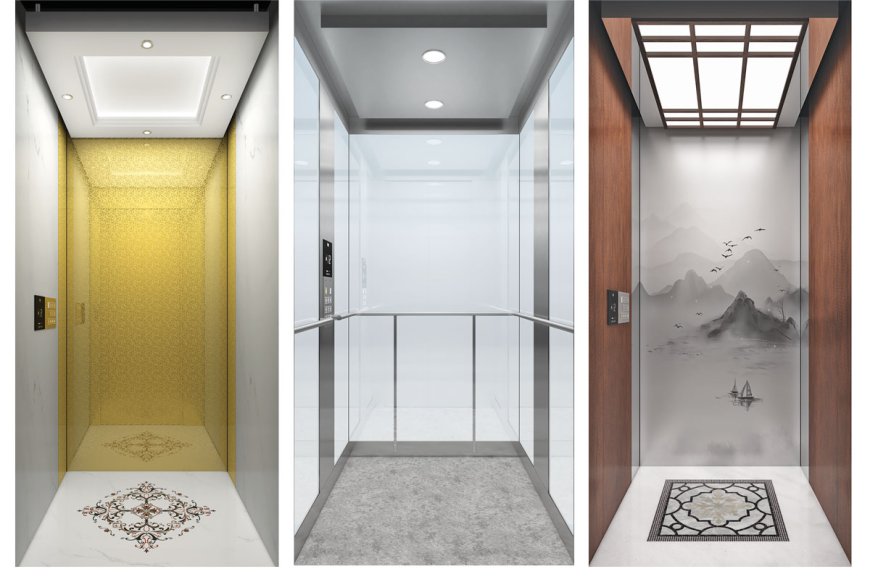Growing demand for villas and private mansions in Tier II cities fuels real estate growth

A significant shift in tier 2 cities’ development in India prompted a favourable evolution in the country’s real estate growth landscape, resulting in a new era of development beyond the major cities. Due to the rise in real estate values, increased economic activity, and the availability of amenities like schools and hospitals, the demand for villas and luxury homes in tier 2 cities like Chandigarh, Mysore, Kochi, Thiruvananthapuram, Ahmedabad, Surat, Nasik, Jaipur, and Mysore are growing. According to research by real estate consultant JLL, India is predicted to experience urbanization at a rate of roughly 50% by 2050. Tier 2 cities are being recognized as the next frontier for real estate development. Thus, this demonstrates the increased interest that developers have in these areas and emphasizes the potential of small cities to play a significant role in the real estate industry’s growth. Furthermore, the developing infrastructure in these areas is facilitating the integration of smart elevators and escalators, enhancing convenience for urbanisation. The industry itself is evolving to meet the growing demands of urbanization and the increasing residential needs, particularly in tier 2 and 3 cities.
Exploring real estate growth in smaller cities and towns
These cities are improving in the level of affordability and are drawing employees who are ready to realize their vast potential in along with residents. Compared to major cities, they are more affordable, have a better work-life balance, and are in a better position to lead India towards a ‘Viksit Bharat’ by 2047, as proposed by the current government. Real estate developers are eager to capitalise on these opportunities. According to JLL India, shift to non-urban cities like Chandigarh, Zirakpur, and Mohali offered affordable and luxurious housing.
The segment is seeing a rise in demand for large and luxurious houses beyond metropolitan areas. This trend is not just about luxurious homes but also surrounds the installation of lavish home elevators in tier 2 and tier 3 cities which significantly reduced property rates and well-located scenic land, purchasing a villa or mansion on a long-term investment plan and the rise of multiple lifestyle options. Additionally, as an asset for the future, buyers are fascinated with customized residences, due to which, increased emphasis on modern facilities and holistic living that they are seeing on a rise in demand from customers. According to a recent report by Housing.com, tier 2 cities in India would be the hub for future economic growth and the premium real estate market, surpassing tier 1 cities in importance. On the other hand, retired buyers decided to stay in the comforts of their hometowns while they were away due to an investment in one of India’s metropolitan cities.
Factors influencing demand for villas and luxury homes
The increasing demand of customers in suburban areas for large, elegant houses has pushed up the prime foundation of the luxurious housing market. These cities have developed into top real estate attractions.
Thus, several factors, including changing consumer preferences and the socioeconomic dynamics of contemporary Indian culture, affect the demand for villas and mansions in tier 2 cities.
Affordability: The primary factor behind the significant shift towards tier 2 cities is affordability. Land and spacious houses are very inexpensive, which makes them an attractive option for those looking to upsize without going over budget. Furthermore, the expectation of value for money in tier 2 cities is where living expenses are often lower.
Urbanization and infrastructure development: Infrastructure development plays another crucial role in driving the expansion of suburban real estate. Governments and corporate organisations are making significant investments in these cities to enhance urban facilities, transportation, and connectivity. The construction of infrastructures that improves connectivity such as highways, airports, metro train systems, and educational facilities raises living standards. These kinds of developments let investors purchase land for significantly less money.
Changing lifestyle preferences: As financial freedom increases and people get more exposed to different lifestyles around the world, there is a growing desire for spacious, beautifully designed homes that provide exclusivity and privacy. Villas and luxury homes are the perfect complement to these changing lifestyle demands because of their wide floor plans, individualized facilities, and beautifully planted surrounds. In addition, villas and mansions frequently represent prestige and status, which appeals to the goals of the growing middle class in tier 2 cities.
Escape from urban areas: The calm living environment and less traffic in tier 2 cities have greatly increased demand for housing in smaller cities and towns. Villas and private mansions, usually found in suburb or gated communities, provide an ideal escape for individuals seeking to get away from the hustle and bustle of the city without sacrificing comfort and elegance.
Future aspects
India’s growing Tier 2 cities are showing of the changing consumer landscape in the nation. These cities have the potential to emerge as the next major real estate hub, influencing India’s development path as people’s desire for modern experiences and the means to satisfy it increase. Motivated by sustainable, long-term demand, these expanding areas such as shopping centers with domestic and international brands and fine dining establishments are gradually developing into narratives as essential roles in India’s economy roles. In addition, these cities are seeing a surge in the development of commercial office space, which supports the retail real estate sector. As a result, people are gradually moving to less crowded suburb areas that offer all the advantages that they might want in metro cities. This increases the demand for residential real estate by bringing in families and professionals looking for a balanced living.
Conclusion
The shift towards idealistic living and healthy lifestyles is reflected in the housing trends propelling the real estate sector's rise in tier 2 cities. Since the onset of Covid-19, technology adoption has accelerated, prompting a surge in demand for infrastructure tailored to this new way of life. Developers have prepared themselves to take advantage of the enormous potential of these cities with advancing infrastructure like elevators, creative initiatives, and calculated investments, providing customers with unique living experiences in serene environments. Tier 2 cities have the potential to influence India’s urban landscape and contribute to the country’s progress toward growth and prosperity.

Manish Mehan







